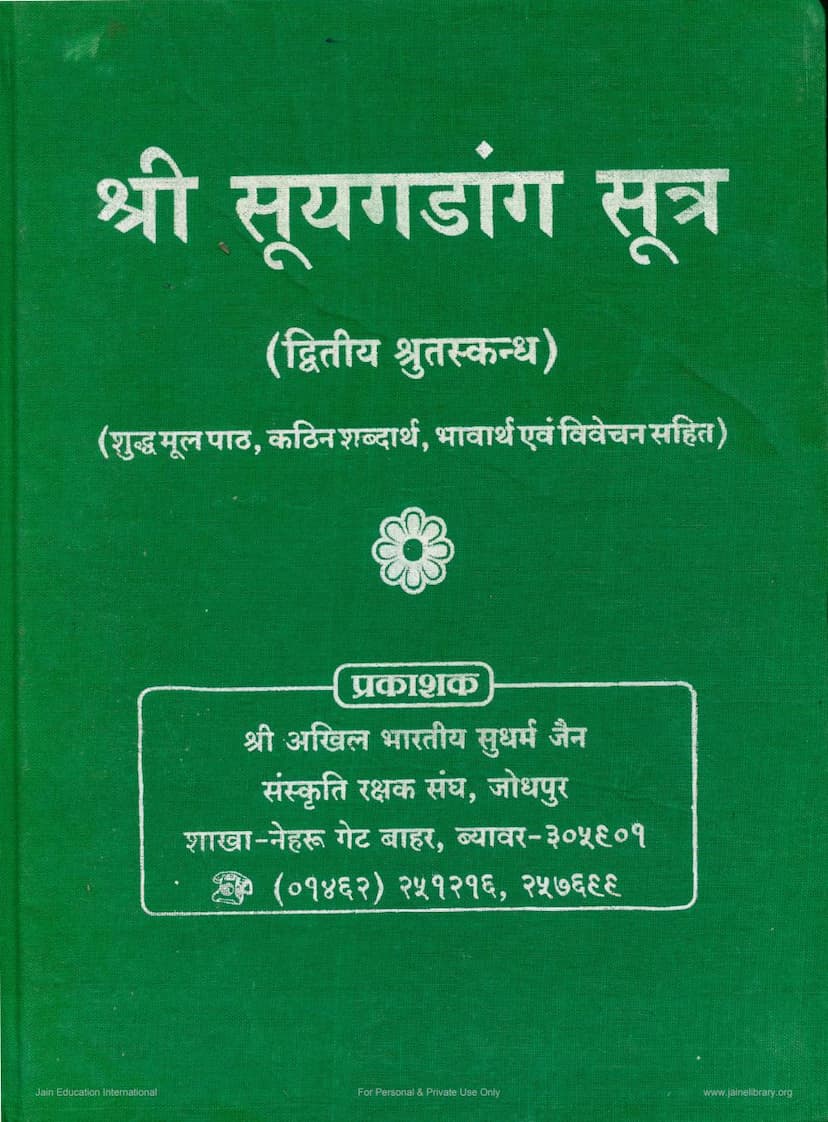Suyagadanga Sutra Part 02
Added to library: September 2, 2025

Summary
I cannot access external links or specific files on the internet, including the catalog link you provided. Therefore, I am unable to provide a summary of the Suyagadanga Sutra Part 02 based on the content of that specific catalog.
However, I can provide a general summary of what the Suyagadanga Sutra typically covers, based on its known content within Jainism:
The Suyagadanga Sutra is the second of the twelve Angas (limbs) of the Jain Agamas, considered to be a collection of the teachings of Mahavira. It is primarily known for its detailed exploration of philosophical views prevalent in ancient India during Mahavira's time, as well as the core tenets of Jainism.
General themes and content typically found in the Suyagadanga Sutra include:
- Philosophical Debates and refutations: A significant portion of the Suyagadanga Sutra is dedicated to presenting and refuting various philosophical schools of thought and belief systems that existed in India at the time. This includes discussing concepts related to karma, causation, the nature of the soul, the soul's relationship with the body, the path to liberation, and ethical conduct.
- Critique of Non-Jain Doctrines: The text often contrasts Jain principles with those of other contemporary philosophical traditions (like Buddhism, Ajivika, and various Brahmanical schools), highlighting the perceived flaws and inconsistencies in their doctrines while establishing the superiority and truth of the Jain perspective.
- Core Jain Principles: While engaging in philosophical debate, the Suyagadanga Sutra also elaborates on fundamental Jain principles such as:
- Ahimsa (Non-violence): The paramount importance of non-violence towards all living beings.
- Karma Theory: The detailed workings of karma, how it binds the soul, and the processes of its shedding (Nirjara).
- The Soul (Jiva) and Non-Soul (Ajiva): The fundamental Jain categories of reality.
- Paths to Liberation: The correct conduct and understanding required to break free from the cycle of birth and death.
- Ethical Conduct and Vows: The importance of vows and ethical behavior for ascetics and lay followers.
- Emphasis on Right Belief, Knowledge, and Conduct (Samyak Darshan, Samyak Gyan, Samyak Charitra): The text stresses the indispensability of these three jewels for achieving liberation.
- Metaphors and Analogies: To explain complex philosophical concepts, the Suyagadanga Sutra often uses vivid metaphors and analogies, such as the lotus in a pond to illustrate the detached state of a liberated soul.
Without access to the specific "Part 02" you mentioned, I cannot provide details unique to that section, such as specific chapters, verses, or commentaries. If you can provide a description of the content of Part 02, I might be able to offer a more tailored summary.